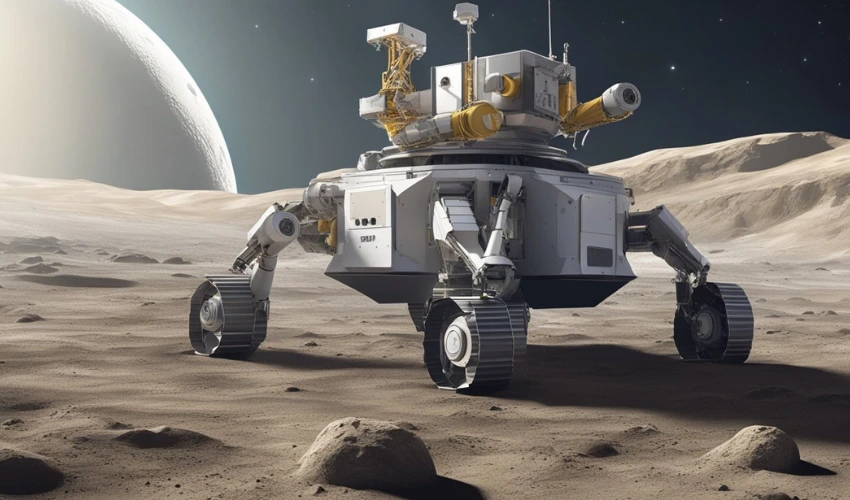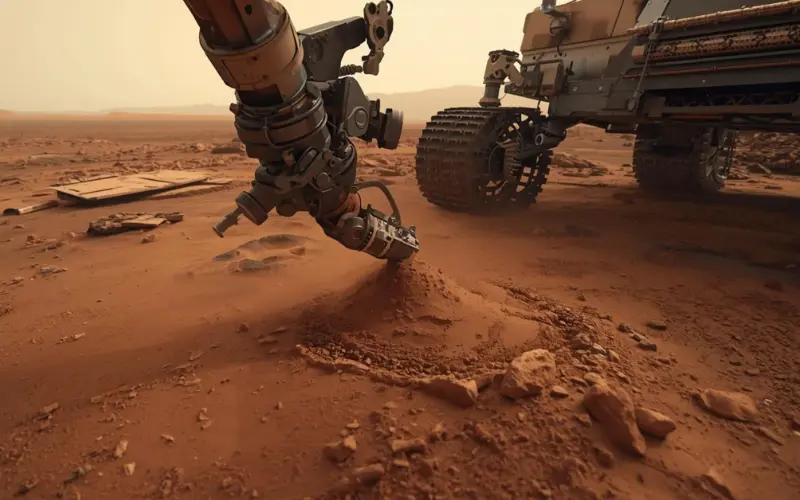

The colonization of Mars is an attractive idea for all the people residing on Earth due to the vast resources available on the Red Planet. Mars offers various minerals and elements, which could be used to sustain future human colonies and enable interplanetary trade. By leveraging Martian resources, future colonists could reduce their dependence on Earth for supplies, and the exploitation of resources that cause great damage to the environment.
Mars has significant ore deposits from high heat from volcanic activity and meteorite impacts. Minerals like copper, chromium, iron, and nickel are concentrated in molten rock layers beneath the crust. These ores could be extracted for use in building infrastructure, machinery, and technology. Most importantly though, many of these metallic ores are conductors, having several applications in the electrical and electronic industry. Volcanic landscapes on Mars, known as large igneous provinces (LIPs), like the Tharsis region, are sources of valuable metals such as nickel, copper, titanium, platinum, palladium, and chromium. These materials are essential in constructing habitats and vehicles, as well as producing electronics and other advanced technology.

Hydrothermal activity on Mars, caused by mineral-rich magma circulating through fractured rocks, has led to the formation of deposits similar to those that create gold, silver, and other precious metal reserves on Earth. In the Auki Crater, researchers have found evidence of hydrothermalism. Minerals such as silica, zeolite, serpentine, carbonate, and chlorite have been detected here, which could play a crucial role in constructing habitats, water purification systems, and environmental control mechanisms. Serpentine can assist in carbon sequestration efforts, helping manage carbon levels in a Martian habitat. Carbonates and chlorite have multiple applications in the chemical industry and in the manufacturing of things like glass.
Meteorite studies have provided insights into Mars’ mineral wealth. SNC meteorites (shergottites, nakhlites, and chassignites)
contain magnesium, aluminum, titanium, iron, and chromium, as well as trace amounts of lithium, cobalt, nickel, zinc, niobium, molybdenum, lanthanum, europium, tungsten, and gold. These metals could craft high-durability alloys that aid electronic components. Iron and titanium develop strong construction materials for buildings, vehicles, and other infrastructure. Most of the remaining elements are categorized as “Rare Earth Elements”. Europium has been used to absorb neutrons in nuclear reactors; lanthanum has been used as an alloy in manufacturing ‘flint’ for cigarette lighters; Niobium is used in jet engines and rockets; Molybdenum helps in making alloys, especially in manufacturing ‘moly steel’ which has quality strength, hardness, and electrical conductivity.
Mars’ surface is filled with dark sand dunes made of basaltic volcanic rock, which is rich in chromite, magnetite, and ilmenite. These minerals are a source of chromium, iron, and titanium. Basalt could be utilized directly for building materials, producing low-cost and durable bricks. These naturally accumulated dunes make basalt mining on Mars more efficient, as the material can be scooped up with minimal effort. Martian dust contains high concentrations of iron, silicon, sulfur, magnesium, calcium, and oxygen. This dust can be collected and processed for a variety of purposes. Iron-rich dust can be used for low-quality brick manufacturing without additional processing or improved bricks by adding sintering agents. Other extracted elements like silicon and sulfur could be crucial in producing solar panels and batteries.
The Opportunity Rover’s discovery of gypsum veins on Mars tells us about a potential source of water. Gypsum, or water-crystallized calcium sulfate, could be processed to extract water for drinking,
agriculture, and other critical uses in a Martian colony. By tapping into gypsum deposits, colonists would gain a renewable water source, reducing the need for extensive water imports from Earth.
Thus, Mars is a hub of resources just waiting to be mined 143 million kilometers away. We just have to find ways to extract these useful substances.






Principal, Ma’am Kain: “After how many years, Divij?” Divij: “Seven years, Ma’am.” I don’t think I’ll ever forget that exchange. It all happened in the stillness of the Activity Centre, just moments after we lifted the Ms. Oliphant Memorial Debates Trophy after seven long years. The hall buzzed with applause,

Robots in Charge: How Automation is Shaping Our Future The twenty-first century is commonly referred to as the “age of intelligence” — not due to the fact that human beings have suddenly grown intelligent, but simply because machines have. From factory robots putting together automobiles to AI-driven assistants controlling supply

I took over as Editor-in-Chief of Wavelength without knowing that I was enrolling not just to edit a magazine, but to etch out a vision. Wavelength has evolved from a biannual science magazine to an interdisciplinary odyssey of ideas — a place that is true to how imagination and intellect